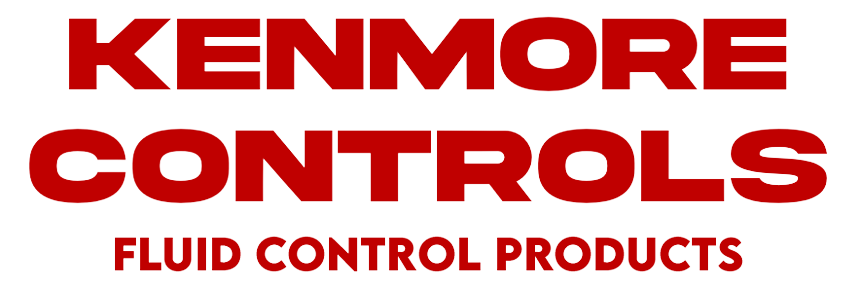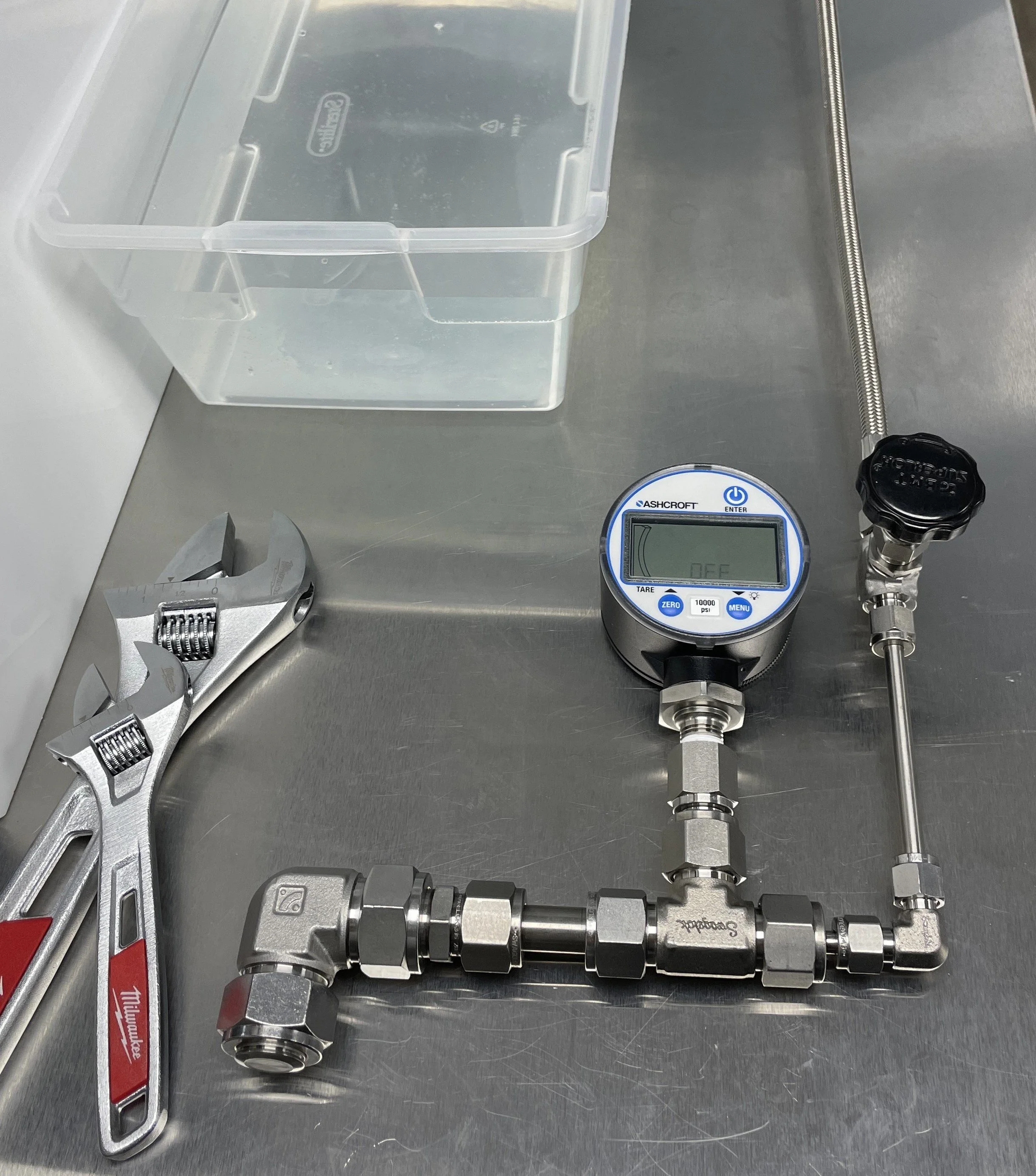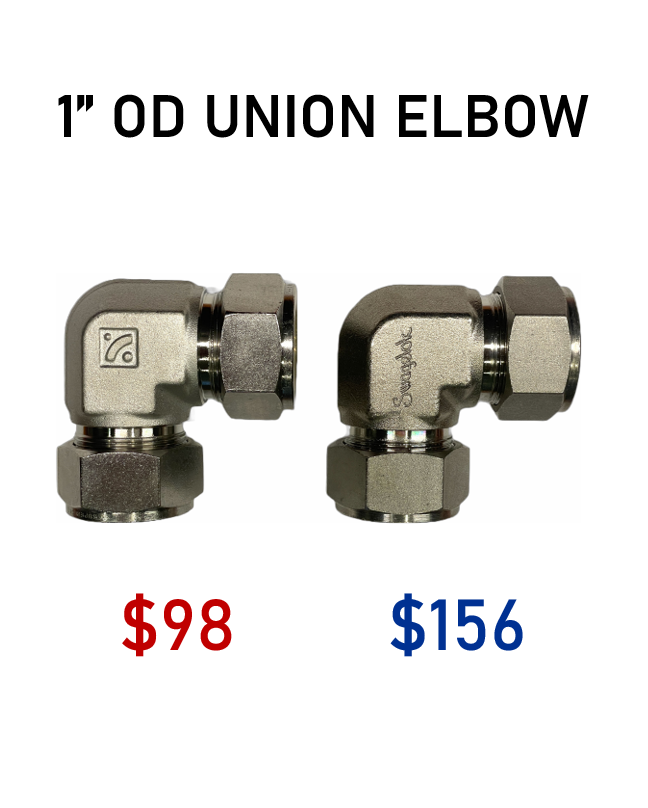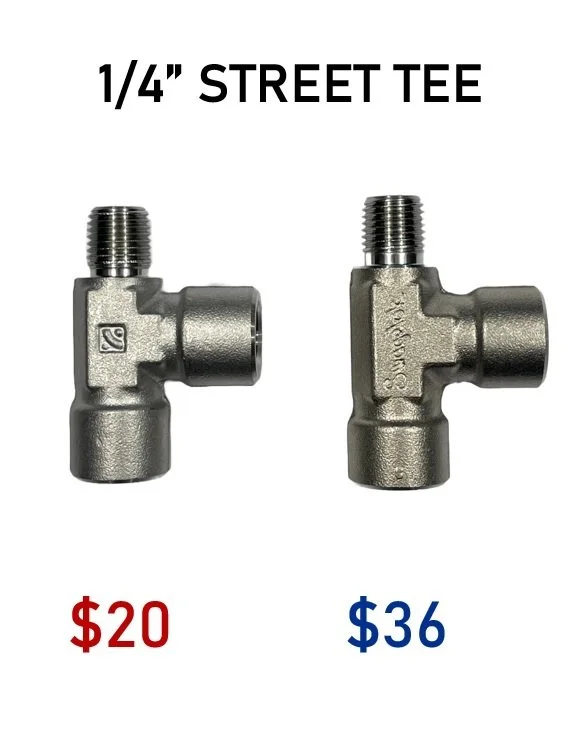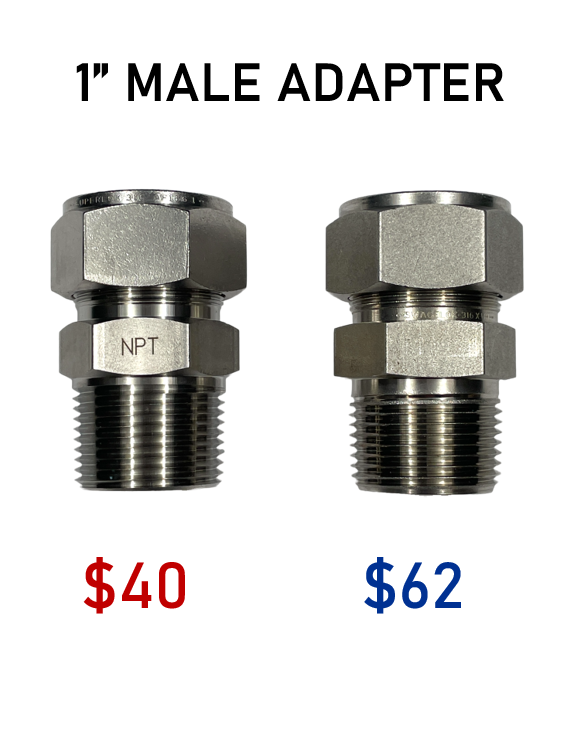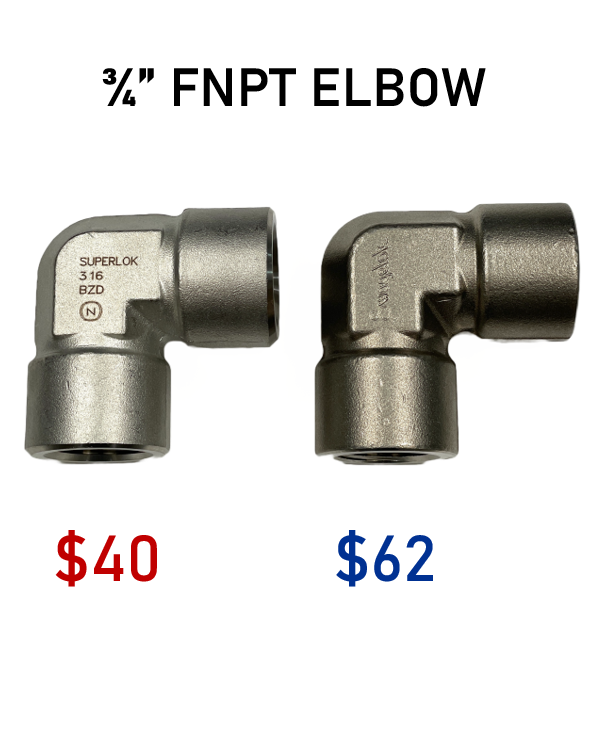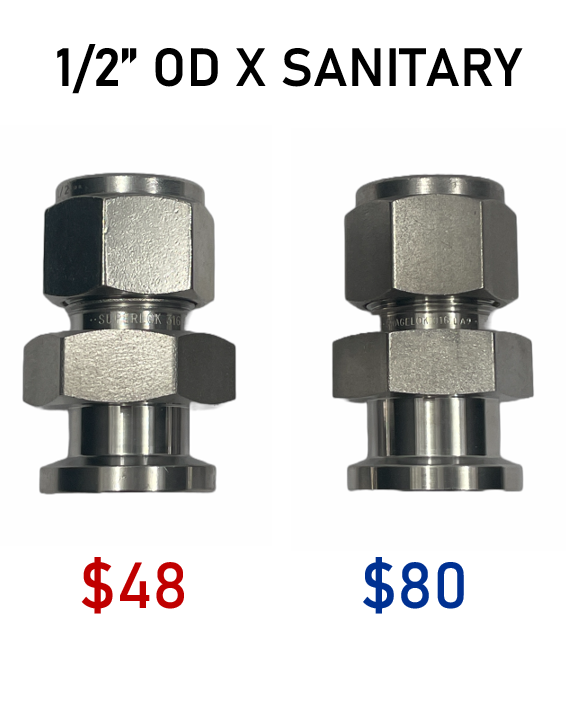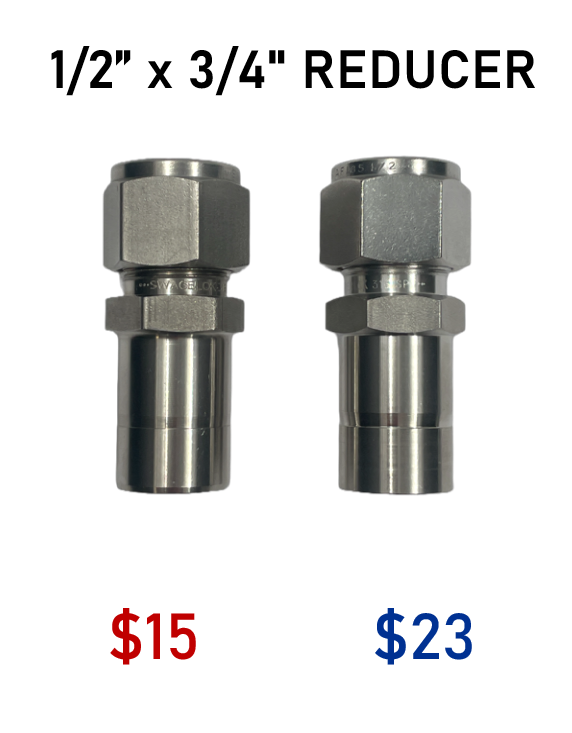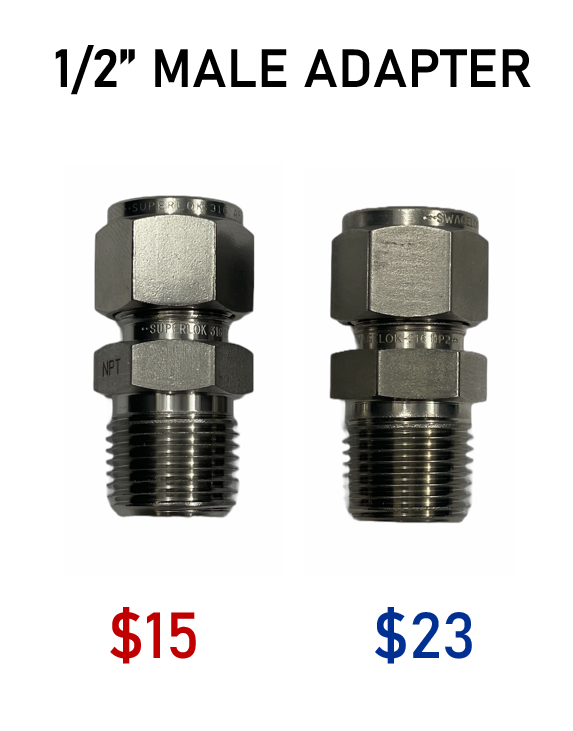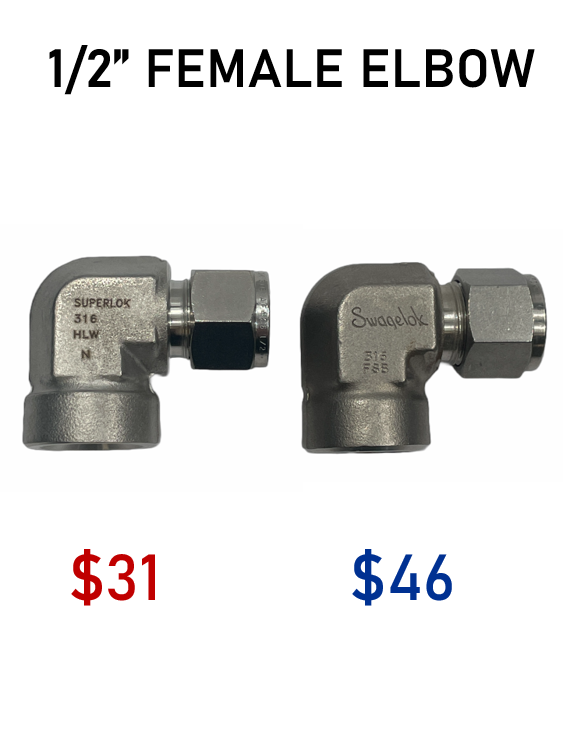TUBE FITTING KNOWLEDGE HUB
THE LACK OF AN industrywide commercial design standard FOR TUBE FITTINGS CREATES A GRAY AREA IN THE INDUSTRY. THIS PAGE IS HERE TO SEPARATE FACT FROM FICTION AND HELP USERS MAKE SMART BUYING DECISIONS
WHAT EXACTLY ARE WE TALKING ABOUT HERE?
Our core product is the two-ferrule tube fitting which is a subset of the broader category known as compression fittings
Our Superlok tube fittings are designed to seal onto a piece of tubing safely and reliably using a self aligning clinching grip achieved by a swaging action on the tube
The fitting is actually an assembly, consisting of four components: the body, the front ferrule, the rear ferrule, and the nut
The body of the fitting adapts the tubing to the opposing desired connection. It could be another piece of tubing, pipe threads, valve body, quick connect, hose etc.
The front ferrule creates the primary seal between the fitting body and the tubing as it swages the material during the tightening procedure
The rear ferrule grips the tubing, provides a secondary back-up seal, and keeps a live-loaded force on the front ferrule which enhances performance
The nut holds the assembly together and when tightened properly drives the prescribed swaging action of the ferrules, ensuring the fitting safely seals up to the burst pressure rating of the tubing
Currently up to 150+ companies manufacture similar two-ferrule tube fittings of varying quality. There are also countless others manufacturing compression fittings utilizing different designs. This can make things a bit confusing for the end user
A BRIEF HISTORY OF THE TUBE FITTING
The patent for the two-ferrule tube fitting was granted nearly 75 years ago
The original patent eventually expired 20 years later in 1969 opening the door for other manufacturers to utilize the fitting design, creating a competitive marketplace ultimately benefiting end users
Over the years manufacturers made improvements that enhanced the performance of their tube fittings and filed new patents along the way, but the original geometry & dimensions of the two-ferrule tube fitting remain unchanged to this day
As global manufacturing practices and automated CNC machinery has improved, so has the availability of high quality tube fittings that integrate seamlessly with one brand to the next
There are now well over 150 different manufacturers of tube fittings active in the global marketplace servicing industries ranging from life sciences to semiconductor
Today many OEM manufacturers now require 2 or even 3 brands of tube fittings listed on their specifications to encourage competitive cost savings as well as to avoid constraints created by sole sourcing. Covid-19 created supply chain disruptions that accelerated this trend
WHAT ABOUT A ‘DESIGN STANDARD’?
The lack of an industrywide commercial design standard for two ferrule tube fittings leaves room for the historically established manufacturers to claim ownership over the geometry & dimensions of tube fittings. But the original patent expired 55 years ago so we consider that ‘We’ve been doing it longer so you can only buy it from us’ argument a weak one. Inherently everything we use in our daily lives had to be conceived by somebody at some point in time.
Many of us intermix fittings & other components from different manufacturers on a daily basis. Consider the threaded NPT connection which is widely accepted as a universal standard connection. It allows a user to purchase a regulator from one manufacturer and a pressure gauge from another and join those two components together effectively ‘intermixing’ them.
When purchasing a pressure gauge, regulator, flowmeter, hose, pipe fitting, tube fitting or the like do you find yourself asking the manufacturer if their NPT threaded connections meet the ANSI/ASME B1.20.1 specification? We’re betting not likely, we had to look it up ourselves just now. But there is a spec to reference for an NPT connection while there isn’t for a tube fitting, thus creating the gray area in our industry.
Unfortunately that gray area opens the door for cleverly disguised marketing and good old fashioned salesmanship to drive the conversation rather than a governing body. Legacy tube fitting manufacturers use borderline fear-mongering rhetoric when discussing the lack of an industrywide commercial design standard. Truth is it’d be impossible to create such a standard, the wide array of compression tube fitting types can’t be boiled down into one specification. Some prefer to keep it this way, because if a true industry design standard did exist the established manufacturers would lose significant market share overnight.
SOME QUESTIONS
Are your fittings patented and in what way?
Answer: If the answer is yes, likely it is the ferrules that are patented
Do you have multiple ferrule designs across your full size range of tube fittings?
Answer: Yes, an 1/8” vs. 1/2” vs. 1-1/2” rear ferrule are all different
Do you ever change the design of your ferrules?
Answer: Yes, continuously over the past decades
Last time you changed the design of your ferrules did you make the change for all of your available fitting materials & sizes?
Answer: No, many materials and sizes of fittings hold no active patents
If I built my facility using your ‘old fittings’ with the previous ferrule design, are the ‘new fittings’ compatible with them even though the ferrules are different?
Answer: Yes, you can intermix the two fittings that utilize different ferrule designs
Do you sell port connectors, which cannot be used without discarding a set of ferrules from one connection?
Answer: Yes, port connectors are very popular
What is your position if my company already intermixes different brands without issue?
Answer: Gray area- different answers for different customers. A large OEM who is already using multiple brands of tube fittings without issue will not get the same answer as a customer who is currently sole sourcing a legacy brand tube fitting
Can you provide testimonials from customers who integrated different brands of fittings together and experienced the issues you are suggesting will occur?
Answer: We have yet to see a customer testimonial supporting their argument
What about port connectors?
If you ever find yourself sitting through a lengthy sales pitch on how great a manufacturer’s ferrules are, ask that vendor if they sell port connectors. When they say yes, ask them if a set of their ferrules must be removed to use one. When they again say yes, then ask them why you’re listening to a sales pitch on how great their ferrules are if they must be discarded to use their port connectors?
The existence of port connectors inherently tells us that the marketing surrounding re-patented ferrules is largely just that- marketing. Our White Paper KCWP-2 delves into port connectors and the dichotomy they have come to represent for legacy fitting manufacturers.
SEE FOR YOURSELF
Visit our Tube Fitting Performance Center to watch us demonstrate the compatibility of our Superlok tube fittings
We purposefully utilized intermixed and interchanged tube fitting connections to demonstrate leak-free compatibility
The assembly is then placed completely underwater so that even the slightest leak can easily be observed
Pressurized to full bottle pressure, all connections are checked closely for any bubbles indicating leakage
REAL WORLD COST COMPARISON
